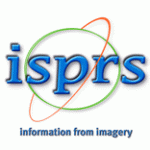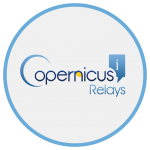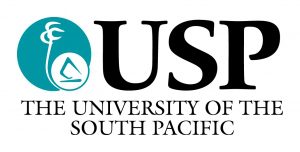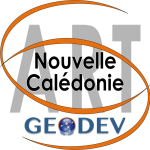-
Pacific Islands GIS & RS User Conference
Bringing experts from across the Pacific and the rest of the world since 1998.
Conference Full Programme, Proceedings and Presentations
SESSION 1 - Tuesday 23.02.21 09:00-10:00
Session leader: Vilimone K. Raqona

Opening of the conference
Schedule: 9:00 - 9:10
Summary of the presentation: Conference welcome and introduction
About the Presenter: TBD

History of PGRSC and the Conference
Russell Howorth - PGRSC
Schedule: 9:10 - 9:20
Summary of the presentation: Brief history of PGRSC and the conference
About the Presenter: Dr Howorth retired from the position of Director, of the SOPAC Division of the SPC on 31ST of January 2013 after serving the region 34 years .He returned to SOPAC the Commission as Director in February 2010 at the request of Vanuatu the Chair of the then SOPAC Commission Governing Council.
He is a professional earth scientist. He retired as Deputy Director of SOPAC on September 30th 2005, after serving the region with SOPAC for over 26 years. He has worked for, and/or carried out fieldwork in all Pacific Small Island Developing States. He has published over 60 research papers, as well as being on country teams as adviser at many international fora. He has worked with all development partners supporting the region.
He has a keen interest in capacity building for Pacific island national and he established and taught in the early 1980s the Certificate in Earth Science and Marine Geology for in-service training of technicians working in the earth sciences. The certificate institutional arrangements were likely unique at the time being taught at the USP in Fiji, by staff from Victoria University of Wellington in New Zealand and overseen by the then CCOP/SOPAC an intergovernmental body comprised largely of Pacific Island countries.
Today, Dr Howorth is a property developer and ecotourism operator in Fiji. He is also the owner/operator of Matadrevula Advisory Services, a small company he established and registered in the Fiji Islands in 2006, in order to provide visibility to his being requested to provide strategic development advice with a broad environmental and sustainable development emphasis to countries, organisations and individuals throughout the Pacific Small Island Developing States (PSIDS) region.
He is currently a member of the Legal and Technical Commission of the International Seabed Authority, a Director of the Circum Pacific Council (for Energy and Minerals), a Trustee of the Pacific Islands Science Technology and Resources Network (STAR), and a Trustee of the Pacific Islands GIS and RS Council.
 The Pacific Islands GIS and Remote sensing User Conference in Vanuatu
The Pacific Islands GIS and Remote sensing User Conference in Vanuatu
Arthur Faerua - Ministry of Lands, Vanuatu
Schedule: 9:20 - 9:25
Summary of the presentation: News and updates concerning the next face-to-face conference in Vanuatu at the end of 2021.
About the Presenter: Arthur V. Faerua is a ni-Vanuatu national and currently holds the position as Director General of the Ministry of Lands & Natural Resources in the Vanuatu Government. In 2019 and 2020, he spearheaded the process of developing and launching the first ever Vanuatu National Geospatial Data Policy 2020 – 2030. He comes from a legal background having served as a lawyer in the Vanuatu Government and also taught as a Law Lecturer at the School of Law, Emalus Campus, USP. He also is a Member of the PGRSC Board and facilitates the work of the Vanuatu GIS/RS Users Group constantly.

Technical Overview Chair PGRSC
Wolf Forstreuter - PGRSC
Schedule: 9:25 - 9:30
Summary of the presentation: Technical overview of the conference.
About the Presenter: Wolf Forstreuter is a forester from Germany, who left the Forest Service, went back to Uni and specialised in earth observation data for forest inventories. After being employed by a RS company and performing this application in several countries in Africa and South America, he came to Fiji in 1991. He conducted the first Pacific forest inventory applying satellite image data. He has stayed in Fiji since and installed GIS and RS units in many Pacific Island Countries. Today he is the Chair of PGRSC.
SESSION 2 - Tuesday 23.02.21 10:00-12:00
Session leader: Ferlisa Valentine

Copernicus, the European Union Earth observation programme
Astrid-Christina Koch - Copernicus
Schedule: 10:00 - 10:20
Summary of the presentation: Astrid will present a short overview of the Copernicus, the European Union Earth observation programme. Copernicus Sentinel data and Copernicus Services are available free, full and open for Pacific Island stakeholders to use.
Website: http://www.copernicus.eu
About the Presenter: Astrid-Christina Koch is Senior Expert in the DG Defence Industry and Space (DEFIS) of the European Commission. She works on the international dimension of the EU Space Programme together with European and International partners. She is the point of contact for the Committee on Earth Observation Satellites (CEOS) and the Group on Earth Observations (GEO) in DG DEFIS and is supporting cooperation on Copernicus worldwide. From 2007 – 2012 she served as science diplomat in the EU Delegation to the United States in Washington DC promoting transatlantic science and space cooperation.
Astrid received a Ph.D. in Natural Science from the Christian – Albrechts University in Kiel/Germany. In her free time she enjoys making chocolates. She can be contacted at Astrid-Christina.Koch@ec.europa.eu

ISPRS and its role during the current pandemic
Christian Heipke - ISPRS
Schedule: 10:20 - 10:40
Summary of the presentation: ISPRS, the International Society for Photogrammetry and Remote Sensing, is an international non-governmental organization that promotes international cooperation between the worldwide organizations with interests in the photogrammetry, remote sensing and spatial information sciences. Established in 1910, ISPRS is the oldest international professional umbrella organization in its field, which may be summarized as addressing “information from imagery”.
The main areas of activity of ISPRS are:
- science and development in photogrammetry, remote sensing, spatial information;
- cooperation between all relevant stakeholders in academia, private industry, government, end users; and
- truly global education, technology transfer, capacity building.
ISPRS achieves its aims by:
- Advancing knowledge in the areas of interest of ISPRS by encouraging and facilitating research and development, scientific networking and inter-disciplinary activities;
- Facilitating education and training with particular emphasis in less developed countries;
- Promoting public recognition of the contributions of the photogrammetry, remote sensing and spatial information sciences for the benefit of humankind and the sustainability of the environment.
The ISPRS scientific and technical programs are organized by five Technical Commissions and about 60 Working Groups which are responsible for particular topics within the Commissions’ areas of interest.
As many other organisations ISPRS faces unprecedented challenges during the pandemic, as many of the activities are not possible. At the same time, new opportunities emerge incl. online meetings and educations, which offer global cooperation without any travel expenses.
This presentation shortly introduces ISPRS as a society as well as its the aims and recent activities. It the reports on what ISPRS did to keep its community going incl. lessons learnt during the last 12 months. It closes on some observations on what we believe could be considered as new ways of cooperation in science and development after the pandemic is over.
About the Presenter: Christian Heipke is the President, International Society for Photogrammetry and Remote Sensing (ISPRS). Graduated from the Technical University
Munich in Geodetic Sciences and Surveying, Christian Heipke is Head of the Institute of Photogrammetry and GeoInformation, Leibniz Universität Hannover, where he currently leads a group of about 25 researchers. His professional interests comprise all aspects of digital photogrammetry & remote sensing, image understanding and their connection to GIS and computer vision. His two areas of special expertise are automatic sensor orientation and object extraction from images.

NASA Support for Pacific island Countries
Laura Lorenzoni - NASA
Schedule: 10:40 - 11:00
Summary of the presentation: This presentation will showcase NASA’s current and planned Earth observing capabilities, and will present some examples of current research being supported by NASA that has applications to Pacific Islands. These include work on the detection of marine debris, coral reefs, and climate change. The presentation will also include information on online trainings available through NASA’s capacity building programs, as well as information on data availability and access.
About the Presenter:Laura Lorenzoni is a Program Scientist for the Ocean Biology and Biogeochemistry Program (OBB) in the NASA Headquarters Science Mission Directorate. The OBB program focuses on describing, understanding, and predicting biological and biogeochemical conditions, interactions and changes in the upper ocean, as determined by observation of aquatic optical properties using remote sensing and in situ data. Laura completed her undergraduate in Biology at the Universidad Simon Bolivar (Venezuela), and subsequently earned both her Master’s and PhD degrees in Marine Science at the University of South Florida. Her research interests include land-ocean interactions, and the influence of rivers on transport and distribution of dissolved and particulate organic matter in the coastal ocean.

Natural Disasters - the New Normal ?
Rafael Kargren - MAXAR
Schedule: 11:00 - 11:20
Summary of the presentation: Rafael will focus on very actual topic of rapidly occurring natural weather events and how to get ready for them using the latest remote sensing technology and data.
About the Presenter: Rafael Kargren is Maxar’s Sales Director for Oceania and Pacific
Rafael has extensive background in satellite earth observation, building remote sensing applications and data management tools especially in areas of risk mitigation and disaster recovery. He has been involved in many international initiatives to improve humanitarian action and disaster response.

Solving the world's problems using agile aerospace from Planet
Tom Farrow - Planet
Schedule: 11:20 - 11:40
Summary of the presentation: Planet provides geospatial insights at the speed of change, equipping users with the data necessary to make informed, timely decisions. We offer a diverse selection of imagery and analytic solutions, all made available online through our platform and web-based tools. From agriculture and emergency response to natural resource protection and security, we believe that timely, global imagery and foundational analytics will empower informed, deliberate, and meaningful stewardship of our planet.
About the Presenter:
Tom is a Senior Sales Executive with remit of Australia and New Zealand for Planet. He is responsible for developing opportunities for Planet business activities in Australia and New Zealand. Tom has spent over 15 years in the surveying and geospatial industries, working across multiple disciplines including hydrographic, geophysical, engineering and GIS. These technical, project and business development roles have included managing complex surveying and geospatial projects and business development throughout Southeast Asia, the US and Australia.
Tom holds a Bachelor of Geomatic Engineering and a Master of Engineering Science from the University of New South Wales.
Planet is the leading provider of global, daily satellite imagery and insights. Planet is driven by a mission to image all of Earth’s landmass every day, and make global change visible, accessible and actionable. Founded in 2010 by three NASA scientists, Planet designs, builds, and operates the largest earth observation fleet of satellites, and provides the online software, tools and analytics that enable users to simply and effectively derive value from satellite imagery.
To learn more visit www.planet.com and follow us on Twitter at @planetlabs.
.

INSIGHT's GIS&RS services supporting sustainable management of PICTs and its resources
Sébastien Lagarde - INSIGHT
Schedule: 11:40 - 12:00
Summary of the presentation: INSIGHT is an innovative New Caledonian starup developping GIS&RS value-added services based on satellite imagery.
This session will deal with a presentation of INSIGHT’s activity, with specific focus on users’ projects to give a better idea of practical applications and global workflow.
About the Presenter: Sebastien Lagarde is a former Hydrographic surveyor and has spent over 10 years in the maritime industry as a marine navigator. He’s been working within INSIGHT SAS for more than 5 years as a GIS & RS technician where he’s in charge of maritime applications, GIS trainings and satellite imagery pre-processing.
SESSION 3 - Tuesday 23.02.21 13:00-15:00
Session leader: Joeli Varo

Shirishkumar Ravan - UN-SPIDER
Schedule: 13:00 - 13:20
Summary of the presentation: Presentation of UN-SPIDER perspective and services using space-based technologies for strengthening disaster resilience in Small Island Development States.
About the Presenter: Shirishkumar Ravan leads UN-SPIDER activities in the Asia-Pacific region.

Meghna Sengupta - University of Auckland
Schedule: 13:20 - 13:40
Summary of the presentation: Anthropogenic climate change can have catastrophic impacts on low-lying coral reef islands. Sea level rise in particular is expected to cause chronic erosion, physically destabilising reef islands rendering them uninhabitable. Here we present an analysis of shoreline changes on 175 coral reef islands
across the western equatorial Pacific, from the Federated States of Micronesia and the Gilbert Islands, Kiribati. We compared historical aerial photographs from the World War II-era with recent high-resolution satellite imagery and used the Digital Shoreline Analysis System (DSAS) to compute shoreline changes across the study islands. The period of our analysis coincides with locally rising sea levels and cover an east-west gradient of increasing storm frequency. Results showed accretion was predominant, with average shoreline change rates of 0.05 m/year and 0.08 m/year, across the FSM and the Gilberts respectively, leading to a net increase of 338.44 ha of land area. However, we observed considerable spatial variability with contrasting shoreline changes at inter and intra atoll scales as well as across individual island shorelines. Within a high storm frequency setting, in the state of Yap, west FSM we observed the loss of three vegetated islands, conversely, we also recorded the formation of three new islands. Collectively, reef islands across these archipelagos demonstrated a range of styles of planform adjustments including, variable responses across ocean and lagoon facing shorelines, highly dynamic spits, instances of island coalescence, and migration of islands on the reef platform. Results emphasise the dynamic nature of reef islands and the importance of regular monitoring and developing a robust knowledge base of shoreline changes that will provide the critical empirical basis to guide adaptation strategies within atoll nations.
About the Presenter: Meghna Sengupta completed her Master's degree in Remote Sensing and GIS from SRM University, India and is currently pursuing a PhD in Environmental Science at the University of Auckland, New Zealand. Her thesis aims to analyse geomorphic changes and their drivers across Pacific atoll islands.

NASA Disasters Mapping Portal for Island Risk
David Green - NASA
Schedule: 13:40 - 14:00
Summary of the presentation: This presentation will showcase NASA’s Disaster Mapping Portal for Island Risk
About the Presenter: David Green is NASA Program Manager for DISASTERS - Risk Reduction & Resilience. He is also contributor to GEO disaster, health and energy tasks.

Rockets, Satellites, Stars and Knwoing Where You Are
Peter Kinne - Gilmore Space
Schedule: 14:00 - 14:20
Summary of the presentation: After almost a decade in the satellite and spatial industry I moved to orbital rockets in 2019. I have learned so much about space. From satellites to rockets and from looking down to looking up. This talk is about my space journey from satellites to rockets and how much I have necessarily needed to learn. One such lesson was that everything, including satellites, needs location.
About the Presenter: Peter Kinne is the Head of Sales at Gilmour Space - Australia. Peter is accomplished at establishing new products in spatial and space industries and building market share and sustainable business models in emerging markets.

ISPRS Technical Commission IV 'Spatial Information Science' in 2020
Sisi Zlatanova - ISPRS
Schedule: 14:20 - 14:40
Summary of the presentation: ISPRS TC IV Spatial Information Science focusses on a large number of aspects related to data structuring, management, visualisation and applications. It was formed in 2016 merging two commissions on theoretical and applications aspects of GIS. The commission has an ambition program for connecting and engaging researchers with research, developments and applications. Besides active participation in regular ISPRS events such as midterm symposia, ISPRS Geospatial week and ISPRS congress, the commission is leading the organisation of a number of key conferences such as 3DGeoInfo, Gi4DM , FOSS4G, Inoor3D, Smart Data Smart Cities, etc. The commission is participating in international testbeds, scientific projects and educational activities. This talk will give an overview on the activities during 2020. Despite the lockdowns and travel restrictions the Commission continued its work and supported the organisation of several virtual conferences and the congress of ISPRS in Nice. Tendencies in the research, identified by these conferences will discussed as well.
About the Presenter: Sisi Zlatanova is a SHARP Professor at the University of New South Wales UNSW). Faculty of Arts, Design and Architecture and Head of the Geospatial Research, Innovation and Development (GRID) lab. Her research interests are in 3D modelling and more specifically integration of BIM and GIS, 3D Indoor modelling, 3D representations, 3D data management and visualisation. Together with a team of excellent researchers, she advances the 3D capabilities of Spatial Information Systems. She is keen exploring new directions for research, but she is also developing and promoting international spatial standards. She is actively involved in the activities of the Open Geospatial Consortium (OGC) and Standards Australia. She is the President of Technical Commission IV ‘Spatial Information Science’ of the International Society for Photogrammetry and Remote Sensing (ISPRS) for the period 2016-2021 and Treasurer of the Urban Data Management Society (UDMS). She has been organising and supporting conferences and workshops providing forums to exchange research results, knowledge and lessons learned. She is one of the founders and a regular participant of Gi4DM, 3DGeoinfo and Indoor3D. She has more than 400 scientific publications and edited 22 books. Her h-index is Scopus 25, Google Scholar 44, Research Gate 38. She works with companies and institutions towards maturing the concepts of spatially enabled Digital twins.

Rémi Andreoli - BLUECHAM SAS
Schedule: 14:40 - 15:00
Summary of the presentation: Earth Observation from Space has seen an amazing growth in the past years with the launch of several public and private constellations. The challenge remains in accessing the right information at the right time and reach the right users who are not necessarily remote sensing experts. Since 12 years, BLUECHAM develops the Qëhnelö™ technology which aims to make information easier and more accessible. The presentation will showcase how cloud computing with a zest of artifical intelligence, all wrapped in interoperability, allows access through a simple web browser to daily, full country and reliable satellite imageries from public space agencies (NASA, ESA) or pivate space agencies (MAXAR).
About the Presenter: Remi Andreoli started his career in 2004 as engineer at the University of Strasbourg within the Young Scientist Program of the European Space Agency. Since 2009, Remi is at the head of the Space Applications Department of BLUECHAM SAS and teaches geographic information system and remote sensing at the University of New Caledonia and the University of the South Pacific in Vanuatu. In 2018, he co-founded Quintesens Pty Ltd.
SESSION 4 - Tuesday 23.02.21 15:20-17:00
Session leader: Viliame Tupua

Drone capture, mapping and Analysis - using technology to create and share useful drone products
James Wright - Eagle Technology
Schedule: 15:20 - 15:40
Summary of the presentation: Capturing and analysing drone imagery can be challenging and time consuming. These inefficiencies are often caused by disjointed processes in the capture, process and dissemination phase. Using an end to end drone solution allows organisations to gather operational data in a more timely and efficient manner. This presentation will examine how drone imagery is captured, analysed and shared in forestry, construction and environmental projects.
About the Presenter: James Wright is GIS Technical Solutions Consultant, Eagle Technology (Christchurch, New Zealand). He really enjoy helping to solve real world issues through the use of spatial technology. Lately his interests have turned to drone and remotely sensed data and how they are used to enhance a GIS (Geographic Information System). He believes there is huge potential in remotely sensed data to aid in solutions and decision making. Hopefully he can demonstrate that you don’t need to be an expert to start gaining insights from these data sources.

Automatic Detection of Optical Signatures within and around Floating Tonga-Fiji Pumice Rafts using MODIS VIIRS and OLCI satellite sensors
Andra Whiteside - University of Aix-Marseille
Schedule: 15:40 - 16:00
Summary of the presentation: Using ocean color L1-L2 MODIS, VIIRS and OLCI of Sentinel 3 imagery at 1 km, 750m and 300m resolution respectively, we were able to detect compact and fragmented pumice rafts, “discolored” waters, and the presence of chlorophyll following the 07 August 2019 Tonga underwater volcanic eruption. This study shows the value of satellite monitoring particularly in regions such as the South Pacific with limited resources to conduct ground truthing exercises across vast ocean expanses. Such detection methods could be used for other floating material after sudden oceanic events. Importantly, pumice rafts have implications on mariners who encounter them. Prior knowledge on their location with the use of satellite imagery could assist in preventing damages to vessels.
About the Presenter: My name is Andra Whiteside and I am a PhD candidate at Aix-Marseille University, France, based in Fiji. My overall thesis topic is focused on Ocean Colour Plume Monitoring from Remote Sensing through Anthropogenic, Climatic and Natural Influences. The aim of this study is to characterize the influence of ocean colour plumes developing around Fiji and their effect on coastal and open water environments utilizing satellite imagery.
Previously, I graduated from the University of the South Pacific with a bachelor’s degree in Environmental Science and Master’s in Climate Change

Remote Sensors for Drones – Technology advancements makes UAV LiDAR, Oblique and multispectral sensors affordable and available
Richard Russel - DRONE SERVICES
Schedule: 16:00 - 16:20
Summary of the presentation: Remote Sensors for Drones - Technology advancements make UAV LiDAR, Oblique and multispectral sensors affordable and available.
2020 has seen the introduction of the Matrice 300rtk multi-rotor UAV from DJI and the Trinity F90+ eVTOL- fixed wing UAV from Quantum Systems. Both UAV systems are 3rd generation enterprise grade platforms that offer users ease of operation, reliability, endurance, affordability, and stable designs to build capacity off.
With stable UAV platforms in use DJI and Quantum Systems are now turning their attention to the development and introduction of a variety of payloads for the multitude of applications users have.
Payloads which will be discussed in the presentation include Zenmuse H20, H20T, P1, L1 and YellowScan LiDAR Mapper 3 for the DJI M300rtk and Sony RX1 RII, MicaSense RedEdge Red / Blue, Altium, and Qube240 LiDAR for the Trinity F90+
About the Presenter: Richard is the Founder and CEO of Drone Services Fiji who’s mission is to enable unmanned aviation capacity and capability in Fiji and the Pacific. Richard has over 30 years’ experience implementing and commercializing innovative technology initially in Oil and Gas geophysical well exploration and now with drones, robotics, and remote sensors. He has a degree in Electrical Engineering from the University of Auckland, NZ and is a licenced CASA remote Pilot.
Drone Services Fiji provides Civil Aviation Authority approved drone licensing training and is an Authorised Dealer for DJI and Quantum Systems and a YellowScan-Lidar reseller. Drone Services Fiji and is a founding member of the Fiji Drone Operators Association and the Pacific GIS and Remote Sensing Council and a member of the Fiji Institute of Surveyors.

From the air to the ground, get a complete point cloud using YellowScan solutions
Teresa Hong - YellowScan
Schedule: 16:20 - 16:40
Summary of the presentation: Terrain Models with UAV borne LiDAR.
About the Presenter: Teresa is a highly experienced geospatial expert, with extensive technical sales and business development skills in multicultural environments in the Asia-Pacific region. She has over 18 years of combined experience in photogrammetric technical support, remote sensing and accompanied project execution in international sales and project-based services for the civilian, government, military and education sectors.
Teresa has held positions with Trimble, Leica Geosystems and BAE Systems, working in the areas of unmanned aircraft systems (UASs), land mobile mapping systems, airborne LiDAR systems, aerial camera systems, and several geospatial software applications. In particular, her work with the defense contractor BAE Systems included acquiring and analyzing video and image data from UASs for geospatial analysis and intelligence reporting.
Beyond her professional career, Teresa is a world traveler and avid nature enthusiast and hiker who enjoys playing badminton with friends. She can be found hiking in Australia’s National Parks, and has completed such Victorian hikes as Wilson’s Promontory. Teresa has dedicated her adventures to experiencing new places, trying new things and pushing personal boundaries.

CommonSensing Solution for Fiji
Leba Gaunavinaka - UNITAR
Schedule: 16:40 - 17:00
Summary of the presentation: The presentation focuses on CommonSe
nsing Solution for Fiji.
About the Presenter:Leba Gaunavinaka works for the United Nation’s Institute for Training & Research (UNITAR)'s UNOSAT Programme as their In-
Country Technical Expert supporting the UK Space Agency's International Partnership Programme's fl
agship CommonSensing Project that is implemented in Fiji, Vanuatu and the Solomon Islands.
Leba will co-present with Richard Oates. Richard Oates is the Managing Director of Spatial Days Ltd, a Partner on the UKSA-funded IPP CommonSensing Project. Spatial Days is a specialist geoinformation services and consulting company that provides Solution Architecture, Technical Management and GIS Consulting Services to the CommonSensing Project. Richard is an experienced Solution Architect, having designed, implemented and supported large geospatial systems over the years for various UK Government institutions, Airbus DS and Satellite Applications Catapult.
SESSION 5 - Wednseday 24.02.21 08:00-09:20
Session leader: Mohammed Shorab

The Copernicus Support Office and the Relays/Academy Networks
Silvia Corti - Copernicus
Schedule: 08:00 - 08:20
Summary of the presentation: The leader of the animation of the two Copernicus networks belonging to the European Commission will explain how they Academy and Relays work to increase awareness about the Copernicus programme and enhance its user uptake.
About the Presenter: Italian with a strong international experience, currently living in Munich, Germany. Senior Project Manager working in the space industry since 2016, managing the leading innovation competitions in the Earth Observation field, on behalf of the European Space Agency. Thanks to her profound expertise in the animation of key stakeholder communities, she is also in charge of the two biggest Copernicus networks worldwide on behalf of the European Commission.

Cloud free Sentinel Mosaics
Irmgard Runkel - GEOSYSTEM GmbH
Schedule: 08:20 - 08:40
Summary of the presentation: The ESA Copernicus program with open and free data provides a great potential for the EO-community. Combined with new technologies like AI, this is a great push for all environmental related topics. But optical data face one great challenge in the most regions of the globe. Due to atmospheric phenomena like haze and clouds the use of this data for time series and change analysis need special attention in the data preparation phase.
This presentation focus on the operational use of the Copernicus data and the automated processing chain for on-demand sentinel-2 mosaics of customer specific regions. By sophisticated algorithms atmospheric effects are normalized, haze is reduced, clouds and cloud shadows are minimized. GEOSYSTEMS provides the relevant products as add-on modules to Hexagons ERDAS IMAGINE.
This reduces the effort to integrate the Sentinel-2 data into operational change detection analysis dramatically and saves time and workload for the staff.
About the Presenter: Irmgard Runkel is the Managing Director of GEOSYSTEMS Germany, providing GEO-IT software and solutions since 30 years. As Master of Geography of the University of Munich, she started her career as academic teacher and scientist at the Technical University of Berlin. Shortly after the reunification she took the challenge to introduce and establish a GIS for soil protection for the State Office of Environment of the Federal State of Brandenburg. As international GIS and remote sensing consultant for the German GIZ as well the United Nations she had the chance to work on great places like Fiji Islands – where she actively contributed in the first real installation and use of image analysis in the Pacific region. She also worked in Indonesia, Bangladesh, Malaysia and Bhutan. At GEOSYSTEMS she joined the board of Managing Director at 1998 – meanwhile she is responsible for GEOSYSTEMS as shareholder and CEO.

Sentinel 2 high-resolution satellite data analysis of the impact of rain on Laucala Bay and open ocean water quality.
Cécile Dupouy - IRD
Schedule: 08:40 - 09:00
Summary of the presentation: Sentinel-2 data of Copernicus are used in order to provide the magnitude of entrainment of turbid water plumes issued from the main South of Suva part, mainly the Rewa River after a major rain event, and help in estimating the impact of fresh waters on mangrove areas and Laucala Bay water quality and on open ocean waters ouside the barrier reefs, validated by in situ data.
About the Presenter:Cécile Dupouy is a senior scientist in ocean color remote sensing at Mediteranean Institute of Oceanography, and researcher of Institut de Recherche pour le Development based in Noumea and Fiji. She is organizing research cruises in the Pacific ocean, to measure optical properties and pigments of the marine waters in order to validate/develop algorithms for phytoplankton bloom detection or particulates and CDOM estimates in tropical oceans and lagoons from satellilte imagery.

Artificial Intelligence & Machine Learning: Improving Your Remote Sensing Projects
Peter Corlett - HEXAGON
Schedule: 09:00 - 09:20
Summary of the presentation: A key challenge for remote sensing professionals now is the abundance of data, rather than the lack of it. AI and Machine learning techniques can address this challenge by extracting intelligence from raw data. A simple example will be presented using machine learning techniques to classify UAV imagery.
About the Presenter: With a background in Earth Science, Peter has worked in the geospatial industry for 29 years in business and technical roles within mining, engineering, government, GIS software and UAV companies. Based in Australia, Peter has experience working in many countries in the Asia-Pacific region.
SESSION 6 - Wednseday 24.02.21 10:40-12:20
Session leader: Josua Wakolo

Sentinel, Worldview and field assessments of Mangroves - get more out of your data by multiphase inventory methods
Prof. Dr. Michael Köhl - University of Hambourg
Schedule: 10:40 - 11:00
Summary of the presentation: The presentation is about Sentinel, Worldview and field assessments of mangroves and get more out of the data by multiphase inventory methods.
About the Presenter: Studied forestry and economics in Freiburg, Germany
Got his PhD from Freiburg University in Forest Biometrics (same time as WoldForstreuter, with whom he spend numerous hours in the computer lab)
Worked 2 years as biometrician for Pfizer, medical research
10 years leader of inventory methods reserach group of the Swiss national forest inventory
Professor for forest biometrics at Dresden Technical University
Since 2004 professor for World Forestry at Hamburg University
Past experience
- Author of 9 books and >90 publications in reviewed journals
- Active in research and consultation projects in India, Nepal, Vietnam, Suriname, Guyana, Belize, Indonesia, Malaysia, China, Trinidad&Tobago, Ghana, Zimbabwe, Nicaragua, El Salvador, Brazil, Madagascar, Central Asia
- 2006 – 2016 Chair of the International Cooperative Program Forests of the UN-ECE
- Lead author 2003 and 2006 IPCC Guidelines for National Greenhouse Gas Inventories
- Lead author Report „State of European Forests“ in 2009, 2011, 2015, 2020
- And most important (and pleasant) developed the Forest Reference Level under REDD+ for Fiji (under WorldBank) and Fiji’s Low-Emission Development Strategy for the agricultural and forest sector (under Global Green Growth Institute)
- Planned and conducted a Mangrove inventory in the Rewa and Ba delta

USG climate fellow program in Costa Rica as an example of international technical assistance for REDD+ and Forest Inventory Assessments
Randy Hamilton - USFS
Schedule: 11:00 - 11:20
Summary of the presentation: The United States government Climate Fellows program, sponsored by the US State Department and implemented by the US Forest Service builds capacity for sustainable landscapes by placing a technical expert in partner countries for approximately 2 years. The Climate Fellow provides direct support to national governments in developing and implementing REDD+ and other mitigation programs and strategies, while also responding to other national needs, filling technical capacity gaps, and providing training and other technical assistance. A new Climate Fellow with expertise in remote sensing and forest monitoring will be placed in Fiji within the Ministry of Forestry in April 2021. This presentation provides an overview of Costa Rica’s National Land Use, Land Cover, and Ecosystems Monitoring System (SIMOCUTE), which the Costa Rica Climate Fellow helped develop. SIMOCUTE is a comprehensive monitoring system comprised of several integrated subsystems that together produce consistent, national-scale information on the status of and changes in all land uses, land covers, and ecosystems. The subsystems integrate field data with remotely sensed data to provide reliable information across forest, agricultural, and other sectors. This information is used to improve land use planning and decision-making and provide input into a variety of national and international initiatives.
About the Presenter: Dr. Randy Hamilton is a forest monitoring technical advisor with a background in remote sensing. He works for the United States Forest Service and in March will move his family to Fiji for two years where he will be imbedded within the Ministry of Forestry as part of the US government Climate Fellows program. He will provide technical assistance and help develop capacity on forest monitoring and related topics for the Ministry of Forestry and other institutions. Dr. Hamilton previously served as a Climate fellow in the Central American Republic of Costa Rica from 2015 to 2017 where he helped the country develop a comprehensive National Land Use, Land Cover, and Ecosystems Monitoring System. He has continued supporting Costa Rica and other countries throughout Latin America until the present time. Prior to moving to Costa Rica, Dr. Hamilton worked for 11 years as a Remote Sensing Specialist at the US Forest Service, Remote Sensing Applications Center (RSAC).

GIS/RS and Drones in the Fijian Forestry Sector, Developments, and Future
Mohammed Shorab - MSD-FORESTRY
Schedule: 11:20 - 11:40
Summary of the presentation: Presentation will be on the latest developments in Forestry Fiji. How GIS/RS and drones have recently aided the management and stakeholders in making decisions quicker and more efficiently.
About the Presenter: Mohammed Abdullah Bin Shorab, Geographer by background having special interests in using GIS and Remote Sensing for Conservation and Environmental management. Currently working for the Ministry of Forests at the Forest Resource Assessment and Conservation Division where I apply the concepts of GIS, RS and UAVs for the Sustainable Management for Fijis forests.
.

Seeing the Forest for the Trees: advances in riparian vegetation monitoring and carbon sequestration modelling using satellite imagery and FullCAM.
Nicolas Metherall - ANU-USP
Schedule: 11:40 - 12:00
Summary of the presentation: Over recent years technological advances in capacity for earth observation have changed the way we can assess vegetation and above-ground biomass carbon both inside and outside of forests. This study outlines global forest datasets, advances in high resolution and modelling of carbon using tree-growth curves and Full Carbon Accounting Model (FullCAM) software to provide an estimate of carbon sequestration over time. Learnings are drawn from a Maxar Spatial Challenge entry which compared the use of submetre Digital Globe imagery and Sentinel 2 Earth Engine assessments of vegetative biomass carbon. The outputs of this comparison are inputted into FullCAM software to assess differences in biomass carbon modelled over time. Biomass carbon modelling become important in the context of enabling Pacific island communities to access carbon markets and additional sources of income for their efforts in climate change mitigation. This study becomes increasingly important in the context of the Pacific where carbon projects through voluntary markets are becoming more popular.
About the Presenter:Nick recently undertook research in hydrology and environmental monitoring with the University of the South Pacific and the Australian National University from 2018-2020. During this time, Nick has worked for the Water Authority Fiji, the National Disaster Management Office and most recently with the Water Resources Team of SPC. With COVID-19, Nick returned to Australia to resume work with the Australian Government Department of Agriculture, Water and Environment. Most recently Nick has undertaken a new role as the Senior Technical Advisor (remote sensing, GIS and carbon modelling) for the Global Evergreening Alliance supporting the Restore Africa program and the landscape restoration across the globe.

40 Years Mangrove Development in Kiribati visible through Earth Observation
Kataebati Bataua - Consultant
Schedule: 12:00 - 12:20
Summary of the presentation: The presentation is about 40 years of mangrove development in Kiribati that is visible through earth Observation.
About the Presenter: Kataebati Bataua is consultant.
SESSION 7 - Wednseday 24.02.21 13:20-15:20
Session leader: Akosita Lewai

Activities of SIBA | GITA (TBC)
Daniel Harvey - SIBA | GITA
Schedule: 13:20 - 13:40
Summary of the presentation: The presentation will expose the activities of SIBA | GITA in the region.
About the Presenter:Daniel Harvey brings 20+ years of software development and business management experience. Strong software engineering background in geospatial information systems (GIS) and 2D/3D computer graphics, as well as the advanced mathematical modelling and data processing associated with spatial information analysis. Daniel is also well versed in industry best-practice for quality and project management, and a graduate from the Australian Military Academy.

Global Mapping and Monitoring Effort Trough the Allen Coral Atlas
Chris Roelfsema - Remote Sensing Research Centre School of Earth and Environmental Sciences The University of Queensland
Schedule: 13:40 - 14:00
Summary of the presentation: The Allen Coral Atlas (http://allencoralatlas.org ) partnership uses high-resolution satellite imagery, machine learning, and field data to map and monitor the world’s coral reefs at unprecedented global coverage. As the Atlas team develops maps of benthic habitat and reef geomorphology regionally and globally, and dynamic monitoring technology, the initiative’s goal is to enable stakeholders to achieve conservation results and improve access to spatial data (e.g., through marine spatial planning or restoration efforts). The presentation will introduce the Atlas itself, how it is made, and some of its functions; will give an in depth explanation of the mapping process, specifically in the Pacific region.
About the Presenter: Dr. Chris Roelfsema is a senior research fellow at University of Queensland. He leads a team of ecologists and earth observation specialists that collect field data that they convert and implement in habitat mapping and monitoring approaches. With 20 years of experience, Chris is specialised in integrating field data, citizen science, physical attributes (e.g. depth, waves) and earth observation science to map and monitor coral reef and seagrass habitats globally. Chris is currently the principal investigator on two major coral reef habitat mapping projects: 1) 3D Great Barrier Reef Habitat Mapping project through GBRMPA; and 2) Allen Coral Atlas for which his team develops and implements mapping of reefs globally.

Digital Atlas of Micronesia - Overview
Maria Kottermair - iREi
Schedule: 14:00 - 14:20
Summary of the presentation: The presentation provides an overview of the Digital Atlas of Micronesia.
About the Presenter: Geographic Information Specialist.

Mapping cultural narratives in the Pacific
Talei Caucau - USP
Schedule: 14:20 - 14:40
Summary of the presentation: Indigenous Fijian culture is interwoven with the physical geography of islands and oceans. Our land and traditions are an inseparable part of Fijian culture. Cultural narratives in Fiji are complex and often vary according to the different provinces. With the increasing rates of globalisation, urbanisation, homogenisation and dilution of culture occurring in Fiji, there is a severe risk that, without being documented and shared, cultural narratives can be lost. The potential of documenting, preserving and sharing cultural narratives in Fiji through both open-source QGIS as well as ESRI ArcGIS Storymaps has not yet been explored. With the use of cultural maps, we can tell our stories and display the origins of these stories and beliefs.
The Vanua is an important element of Indigenous knowledge in Fiji that connects our communities to the land and ocean and, in doing so, to their ancestors. Yet, indigenous Fijian culture is rarely ever written by Fijians. So often, our stories are told by foreigners. These understandings vary from different communities and demographics across Fiji.
I have been collecting data through ‘Talanoa’ or Fijian storytelling to learn of what the Vanua means to different groups. This involves interviews with both women and men, different age groups from various provinces of Fiji. With the use of maps, I want to show the different perspectives of Indigenous Fijians from different provinces.
About the Presenter: Talei Caucau, USP.

Harmonising incompatible datasets.
Siu Jione - University of Leeds
Schedule: 15:00 - 15:20
Summary of the presentation: This study examines the state of using GIS to study non-communicable diseases (NCDs) in Tonga. Inconsistent units of analysis, methods of data collection, recording, processing and dissemination hinder the integration of GIS and socio-economic data. A general framework for data conversion was created as an attempt to harmonise existing incompatible datasets. Geographic conversion tables were created to demonstrate how disparate datasets can be linked, converted and processed into a format that can be used in a GIS to analyse NCDs in association with area deprivation across different levels of geography. This study found that area deprivation was higher in rural areas and was associated with the prevalence of NCDs. However, at a lower level of geography, there were no clear patterns of the distribution of NCDs and deprivation due to the methods of data collection and processing.
About the Presenter: Siu Jione is a GIS consultant, a member of OSGeo Oceania, a QGIS enthusiast and an advocate of ParticipatoryGIS (PGIS). She is the author of a GIS toolkit for Pacific communities titled 'The Community Mapping & QGIS toolkit for climate & disaster risk mapping', a 900+ page step by step guide on the use of QGIS accompanied with video tutorials and spatial data. She has developed learning materials for a number of GIS trainings and programmes in the Pacific region at the community and national level and has taught GIS for postgraduate classes.
SESSION 8 - Wednseday 24.02.21 15:40-17:00
Session leader: Salote Viti

Building a Resilient OpenStreetMap Community in Fiji
Carrol Chan - Consultant
Schedule: 15:40 - 16:00
Summary of the presentation: This presentation will explore the opportunities and activities a volunteer group has put together with the overall aim of building an active and resilient openstreetmap (OSM) community locally here in Fiji. OSM is a volunteer collaborative project to create a free editable map of the world, with the geodata created the primary output of the project. This geodata can be used in various ways including the production of paper and electronic maps, geocoding of address and place names and more importantly to address humanitarian response and recovery work in the face of disasters and emergencies. Since Cyclone Winston in 2016, there have been numerous contributions to OSM for Fiji, however since the recent devastation of Cyclone Yasa updated geospatial data that informs us of communities that are vulnerable has never been more important.
About the Presenter: Carrol Chan, Consultant.

Valorization of historical aerial photography archives: from collection to use and sharing
Yoann Roncin - Government of French Polynesia
Schedule: 16:00 - 16:20
Summary of the presentation: The government of French Polynesia has numerous aerial photo archives over the period from 1955 to the 2000s and covering the whole of French Polynesia. The process of valuation of this data will be described during our presentation hrough different phases:
First phase: the digitization of each photo, the collection of metadata and the realization of flight plans.
Second phase: GIS operations, completion of metadata and the creation of mosaics.
Third phase: future prospects for the distribution of mosaics within the administration and on the web.
About the Presenter:GIS analyst for the topographic departement of the French-Polynesia Land planning agency. Yoann Roncin is in charge of the databases (POSTGRESQL / POSTGIS), data control and integration of spatial data, map-making and the necessary tools development.
Gold Sponsors
Silver Sponsors
Cooperating Organisations

Since 2018, PGRSC is the Regional Member of ISPRS for the Pacific Island Countries.
Since 2020, PGRSC is member of the Copernicus Relay Network for the Pacific Region and highlights our local champions, coordinates and promotes activities around the Copernicus Programme, its benefits, and opportunities for local residents and businesses.







